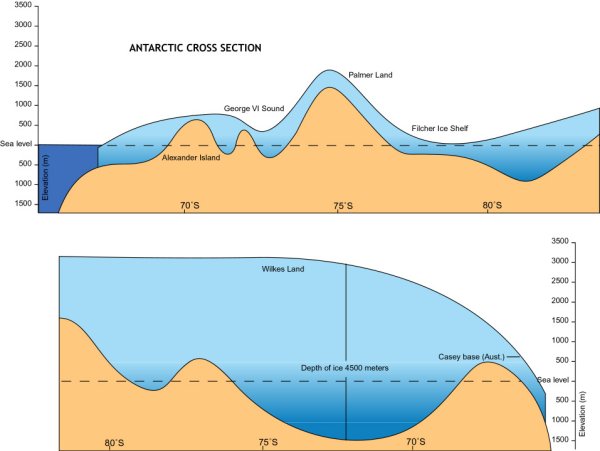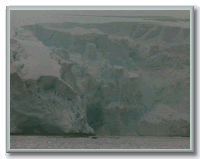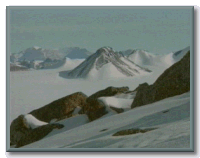Antarctica is the coldest, windiest, iciest and most inaccessible continent on Earth-but it's also one of the most beautiful and fascinating places. And it's the only region of our planet dedicated, by international treaty, to the peaceful exploration of land and life.
An ice sheet covers all but 2.4 per cent of Antarctica's 14 million square kilometers. At its thickest the ice sheet is 4,776 meters deep. It averages 2,160 meters thick, making Antarctica the highest continent on Earth. This ice is 90 percent of all the world's ice, and 70 percent of all the world's fresh water.
We may think of the Antarctic as frozen in time, and changeless. But in fact much of this ice is in motion... sometimes slow and sometimes--as in the calving glacier near Palmer Station, a cliff of ice collapsing into the ocean--moving very quickly!
|
|
The Transantarctic Mountains cross the continent, dividing the ice sheet into two parts. The larger, eastern part of the ice sheet rests on land that's mostly above sea level. It has been there for millions of years.
To see the difference between East and West Antarctica, click on the button to remove and replace the overlying ice sheet!
|
The smaller, western part is on land that's mostly below sea level. The Ellsworth Mountains are Antarctica's tallest; the Vinson Massif is 4,897 meters above sea level.

Antarctica's few ice-free areas, generally near the coast, include the McMurdo Dry Valleys of southern Victoria Land, the Bunger Oasis in Wilkes Land, and isolated spits of land and peaks of mountains-called "nunataks"-that are surrounded by ice.
|
|
|
WANT TO LEARN MORE?
|
|
Glossary
Nunataks
|
|
Websites
• Poles Describes the location and facts about the South Pole including the difference between the magnetic, geographic and geomagnetic pole. • Ice Shelves Facts about ice shelves. • Ice cores and climate change An explanation as to how our climate has changed over the years and how ice cores show us that record. • Obtaining information from ice cores A description of the information that can be obtained from ice cores. • Dating a core An explanation of how we can date ice cores when the layers in ice cores are not usually visible. • Antarctic Adventure 1997 Information on the geography and climate of Antarctica. • Meteorology A general description of the climate of Antarctica. • Ozone Basic information on the ozone layer and the ozone hole. • Aurora A basic explanation of the aurora (Aurora Australis) as it can be seen in Antarctica. • Antarctic Prehistory Introduction Background information on the prehistory of Antarctica. • Antarctic Prehistory More background information on the prehistory of Antarctica. |
![]()

